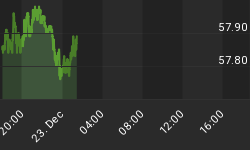After faltering a little in January and February, German business morale recovered smartly this month, with the Ifo business sentiment index rising to 107.7 from 107.0 the month before. The current conditions index recovered to 112.4 from 111.6 while the business expectations index rose back to 103.2 from 102.6 the month before. All told, German businesses appear to be recovering more quickly than expected from the three percentage point hike in the VAT rate that took effect at the start of the year.
Chart 1
Our economic growth model for Germany, created by my colleague James Pressler, suggests that year-over-year growth will come in around 2.9% in Q1 and 2.8% in Q2, down from the 3.5% seen in Q4 2006, but still a very respectable level of growth for the Euro-zone's largest economy.
Chart 2
It seems the German government is also feeling more sanguine about the outlook. After three of the country's leading economic think tanks raised their 2007 growth forecasts earlier this month, Labor Minister Muentefering told a German newspaper this weekend that the government expects growth of 1.9% this year - up from the previous forecast of 1.7% - "and I would quietly add an 'at least' to that."
German data to watch over the next few days include the GfK consumer confidence index for April (due March 28), March unemployment data (March 29), February retail sales (March 30), and preliminary March CPI (due before the end of this week).
Although the ongoing German recovery bodes well for the wider Euro-zone, it does not tell the whole story of the 'zone. For that, we turn to our favorite Euro-zone leading indicator, the Belgian National Bank's (BNB) business confidence indicator. As we've noted before, thanks to Belgium's strong trade ties with its neighbors (about 80% of Belgium's manufacturing output is sold abroad, mostly to fellow EU members), the BNB's business confidence index is a reliable leading indicator - about six months out - for GDP growth in the Euro-zone as a whole.
Last week came the news that the headline index fell rather markedly in March, dropping to 1.4 from 3.5 in February. The index remains in positive territory - which means the optimists still outweigh the pessimists - but the BNB noted that the index's moving average "continues on its light downward trend." The retail sales sub-component recovered from 5.8 in February to 6.3, but the construction sub-component slipped from 8.3 to 7.4. More to the point, the manufacturing sub-component dipped into negative territory for the first time since early 2006 (from +2.0 in February to -1.0 in March), as manufacturers' assessment of the export orders trend dropped from a reading of +7.0 in February to -3.0 in March. It may be that the stronger euro is finally starting to weigh on exports.
Chart 3
Our growth model for the 13-nation Euro-zone suggests that real GDP will slow from the 3.3% yo- y seen in Q4 to around 3.1% in Q1 and 2.8% in Q2. And, if the trend indicated by the BNB survey continues to hold, we suspect that the second half of the year will be weaker than the first.
Chart 4
And where does this leave the ECB? After raising its repo rate 175 basis points over the past 16 months, is the bank preparing to take a breather? Probably not. The pace of rate hikes has certainly slowed from the every-two-months seen in the second half of 2006, but we still anticipate at least one more 25bp increase, coming at the June 6 meeting.
Chart 5
Over the past few days ECB policymakers have pointed out that the bank "remains ready to act," stressing that rates remain supportive of growth and that medium-term inflation risks persist.
Although Euro-zone inflation has been below the ECB's 2.0% target for the past six months, policymakers reportedly are concerned that it will spike up again in the second half of this year, when comparison with prices a year earlier will be less favorable. The jump in oil prices in the past few days thanks to Middle East tensions will serve to underline the risks.
Euro-zone data to watch over the coming days include the flash March inflation number (March 29) and various 'zone sentiment surveys (March 30). The pronouncements of ECB policymakers will also be scrutinized carefully in the run up to the next policy meeting, scheduled for April 12.
















